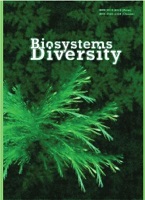Metamorphosis differences of caudiciform plants as an adaptation to arid conditions
Metamorphosis differences of caudiciform plants as an adaptation to arid conditions
Author(s): Y. V. Aviekin, N.V. Nuzhyna, M. M. GaidarzhySubject(s): Environmental Geography, Environmental interactions
Published by: Дніпропетровський національний університет імені Олеся Гончара
Keywords: Fockea edulis; Adenium obesum; Petopentia natalensis; Apocynaceae; stem and root anatomy; drought adaptation; seedlings; juvenile plant; immature plant;
Summary/Abstract: In the course of evolution, the formation of succulent variations in the underground and surface parts of plants in different taxa could occur simultaneously under the influence of similar abiotic factors, in particular as an adaptation to arid conditions, and similar structural features even in distant families are a manifestation of convergent evolution. Along with this, the development of such adaptive structures in ontogeny can occur in different ways in different taxa. Studying the anatomical and morphological features of the vegetative organs of Fockea edulis(Asclepiadoideae, Apocynaceae) at the early stages of ontogenesis and comparing them with those of other plants will improve the understanding of the features of growth and development of caudex-like plants. The research was conducted on seedlings, juvenile and immature plants of F. edulis. When comparing the features of the development of vegetative parts of three representatives of the Apocynaceae family, we found that the strategy of succulent traits development in F. edulis at the organ level is characterized by the active development of the hypocotyl already at the seedling stage, similar to Adenium obesum, and the subsequent formation of an expanded basal part of the stem due to the combined cortex-pith thickening and radish-like root due to the growth of xylem parenchyma. However, Petopentia natalensis is characterized by a mesophytic seedling. It was established that secondary thickening in the basal part of the stem occurs in two individual ways: in Adenium obesum, the cambium generates solid rings of phloem and parenchymatized xylem; in P. natalensis and F. edulis, the bundle type of conducting elements is preserved. The thickening of the tap root in F. edulisis similar to that in A. obesum.
Journal: Biosystems Diversity
- Issue Year: 31/2023
- Issue No: 1
- Page Range: 20-27
- Page Count: 8
- Language: English

